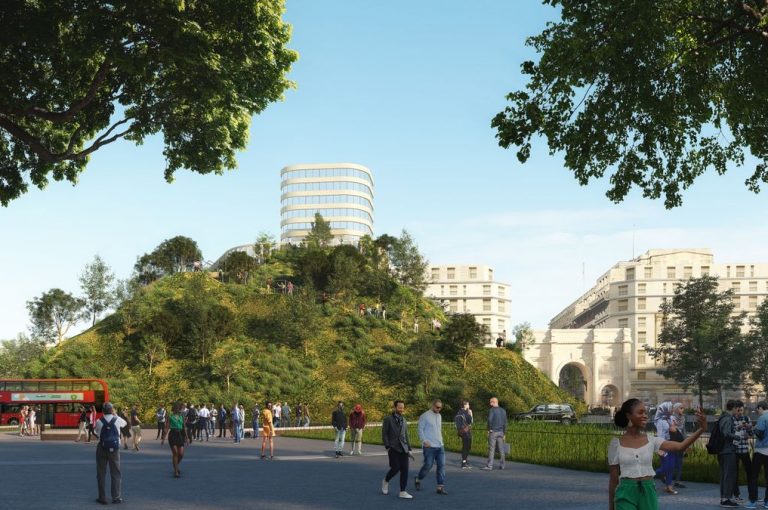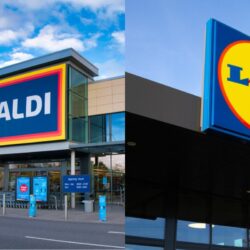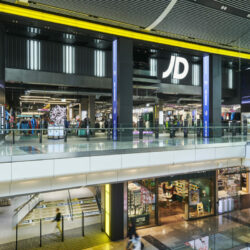Plans for an artificial and temporary 25m hill in Marble Arch were first unveiled in February in response to Oxford Street and the wider West End district of London being battered by three lockdowns.
The hill is part of a wider £150 million revamp of Oxford Street by Westminster City Council, which estimated that the attraction could be enjoyed by up to 200,000 people once it is operational.
The Marble Arch hill is now slated to open on June 21, the date when all Covid-19 restrictions are due to be lifted. It will operate for six months. Construction work has already begun on a large mound of soil next to Marble Arch, on the western end of Oxford Street, to create a hill that features platform providing views over Hyde Park and the West End.
Prior to Covid-19, the West End’s popularity attracted millions of tourists to Oxford Street and surrounds, and offices in the area had hundreds of thousands of workers from around London and within the commuter belt. So it’s hardly surprising that the district suffered from a colossal drop in footfall since the start of the pandemic, not just because of people working from home and travel restrictions – but also because of the three lockdowns.

Westminster City Council leader Rachael Robathan said in February that the Marble Arch hill was an attempt to to focus attention on the area, which she said has been increasingly overlooked as a central London destination.
With the new hill aimed at luring shoppers back to Oxford Street and surrounds as restrictions continue to ease, council is also expected to carry out interim improvements on what his the UK’s busiest high street – such as wider pedestrian spaces, more trees and greenery along streets, and new lighting. And once the Marble Arch hill is ready to be taken down, the trees and landscape used to build it would be relocated to other parts of the district and local community.
“We needed to make the area more attractive and greener, and it’s really important to have tangible projects – we wanted something that can attract people back to the West End,” Westminster Council’s Oxford Street programme director Elad Eisenstein told The Telegraph.
“The diversification of uses is really important, and we know it’s got to be more than just retail.
“There’s going to be more leisure, culture and art. As people shop more online, it’s about making people remember that experience and increasing people’s dwell time.”
“Any new – exciting – attraction will drive footfall up into an area”
There are speculations as to whether the new attraction would be enough to return footfall levels in the West End back to what it was pre-Covid. Although high streets across England and Wales witnessed an comeback in footfall as non-essential retailers reopened on April 12, total footfall was still about a fifth, or 19.9 per cent, lower than for the same week in 2019, according to Springboard.
In fact the latest weekly footfall monitor from Springboard revealed that footfall across all UK shopping destinations in the week starting April 18 dipped by 3.4 per cent against the previous week.
While all retail locations saw a slight decrease in footfall following the initial rush after curbs eased on April 12, high streets were the most robust location, with footfall dipping by just 0.8 per cent against the previous week.
“Any new – exciting – attraction will drive footfall up into an area, and for the West End this is particularly important as so many people are now working from home and so making fewer trips into central London,” Springboard insights director Diane Wehrle told Retail Gazette.
“This will act as a magnet to draw people into the West End who will then move through Oxford Street and surrounding shopping areas and spend in stores and dining outlets.
“However, it is also important to be realistic, and with footfall still half the 2019 level and a more hybrid working pattern likely to emerge, it is probable that footfall levels will remain lower than in 2019.”
Wehrle added that retailers in the district should consider new attractions as well as experiential retail if they plan on luring in consumers.
“It is the blend of both that delivers maximum impact,” she said.
While the lure of a key visitor attraction is key, the overflow of shoppers into stores – which need to continue the experience – will ensure they stay longer and spend more.
“A key attraction such as the Marble Arch hill will undoubtedly draw tourists to stores nearby,” Wehrle explained.
“Whilst Oxford Street is an iconic retail destination, it doesn’t have any key attractions as other parts of central London have, and this new addition will fill that gap.
“It’s location, between Hyde Park and Oxford Street will link the two areas, and draw visitors from the park into the West End.”

Katie Blake, client and commercial director at destinations specialist consultancy Kallaway, said the Marble Arch hill would have no difficulty in luring people keen to climb to the top, take a selfie and take in the view.
“Whether these visitors will convert into footfall for the West End as a whole, and convert into spenders is bigger question here,” she said.
“To be successful, the new attraction needs to be part of a joined up destination wide approach that includes the retail offering, and beyond including food & beverage and hospitality too.
“There is a risk that the Marble Arch Hill will have temporary appeal, and struggle to retain and spin out visitors to discover the wider area in need of a credible footfall boost.
“The addition of a new green space to the West End is an opportunity for brands across the district to embrace this theme in their product, window displays and in-store offering and menus.
“This, coupled with guides who can interact with visitors, way finding and signage will be key to helping the area grow footfall meaningfully with intent to spend and help the West End get back on its feet.
“Marble Arch hill has all the ingredients for successfully lifting footfall in that particular area, but will be pressed to boost numbers for Oxford Street, or the West End, overall without significant integration with the area’s wider reopening offer.
“This attraction will work as a brilliant new green space for Marble Arch, and help visitors engage with this often overlooked corner of the West End in new ways, but its ability to boost footfall on Oxford Street from visitors with intent to spend and not pass through for the latest selfie spot remains to be seen.”
New West End Company chief executive Jace Tyrrell said the past 12 months have been the toughest on record for retailers on Oxford Street and surrounds.
“Westminster City Council’s ambitious plans are a sign of a forward thinking, sustainable and agile future for the district, creating an altogether stronger and more exciting high street that caters to the needs of the ever-evolving consumer,” he told Retail Gazette.
“Forming part of these plans it’s the Marble Arch Hill, a unique and one of a kind installation that will entice customers back this summer and which offers visitors a new experience in the West End.
“We hope that the attraction will help drive footfall to the district and continue to draw back our much missed and much valued customers.”
Retail expert Nelson Blackley argued that the challenge faced by retailers in central London was entirely linked to the plunge in footfall.
“There is a risk that the Marble Arch Hill will have temporary appeal”
“Until and unless we get to a situation where international travel returns and office workers stop working from home, then attractions of any type sadly won’t make a significant difference,” he said.
“London’s West End retail district, which in a normal year would see £10 billion spent by office workers and international tourists, and which employs over 150,000, has seen Covid-19 and the restrictions on retail and hospitality deprive it of 80 per cent of its income.
“It is hard to argue with Westminster city council who say Oxford Street, the centre of a retail area that in normal times would see 200 million shoppers a year, has suffered as much or more than any other high street in the country during the pandemic.
“So drastic action is needed, and this hill is part of a wider £150 million strategy to lure back visitors and modernise the area to coincide with the end of lockdown in June.
“However, it needs to be seen as just one element of a five-year plan to spend £150 million transforming the streetscape of the Oxford Street district, from Marble Arch to Tottenham Court Road, including a series of temporary interventions that will encourage visitors back after lockdown.
“This proposed ‘Marble Arch Mound’ just happens to be the highest profile story which is creating much of the interest and debate.
“These types of investments are difficult to measure, but with the prospect of 1500 people a day paying ‘nominal’ ticket prices, it’s possible that over the expected six-month life the cost might be partially recouped.
“The risk is that it is seen as another expensive white elephant that doesn’t generate the interest or the visitor numbers expected, and so an ineffective waste of public money.”
Blackley further argued that a climbable 25 metre-high hill is unlikely to draw interest from tourists outside of London, let alone further afield.
“There are so many more interesting, natural and reasonably accessible peaks for millions of those living across the UK,” he said.
Although Westminster City Council has estimated that the Marble Arch hill could draw in up to 200,000 people once it is operational for summer, retailers will have to wait and see what impact it brings to their trading.
Click here to sign up to Retail Gazette‘s free daily email newsletter


















